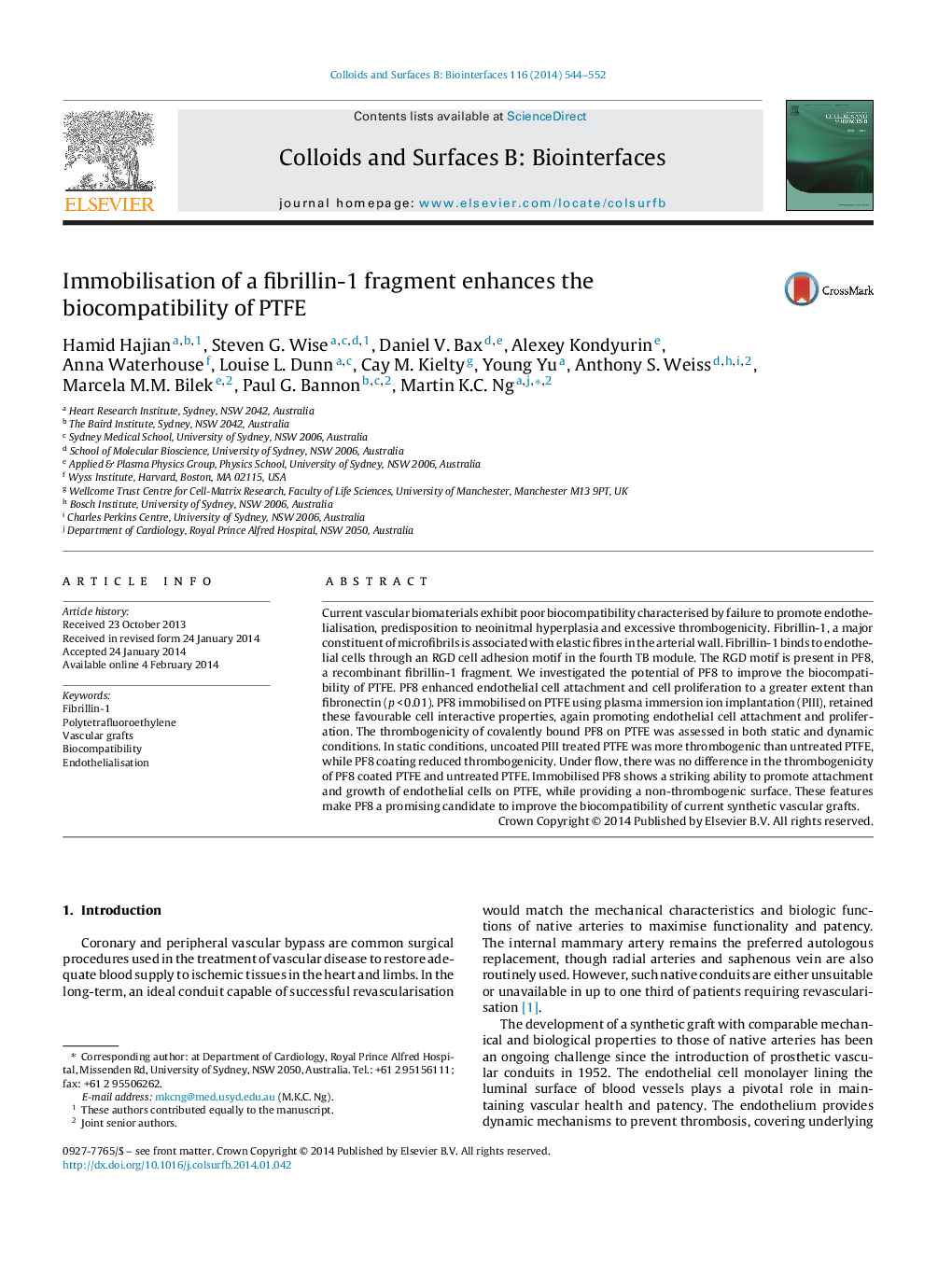| کد مقاله | کد نشریه | سال انتشار | مقاله انگلیسی | نسخه تمام متن |
|---|---|---|---|---|
| 6983439 | 1454288 | 2014 | 9 صفحه PDF | دانلود رایگان |
عنوان انگلیسی مقاله ISI
Immobilisation of a fibrillin-1 fragment enhances the biocompatibility of PTFE
دانلود مقاله + سفارش ترجمه
دانلود مقاله ISI انگلیسی
رایگان برای ایرانیان
کلمات کلیدی
موضوعات مرتبط
مهندسی و علوم پایه
مهندسی شیمی
شیمی کلوئیدی و سطحی
پیش نمایش صفحه اول مقاله

چکیده انگلیسی
Current vascular biomaterials exhibit poor biocompatibility characterised by failure to promote endothelialisation, predisposition to neoinitmal hyperplasia and excessive thrombogenicity. Fibrillin-1, a major constituent of microfibrils is associated with elastic fibres in the arterial wall. Fibrillin-1 binds to endothelial cells through an RGD cell adhesion motif in the fourth TB module. The RGD motif is present in PF8, a recombinant fibrillin-1 fragment. We investigated the potential of PF8 to improve the biocompatibility of PTFE. PF8 enhanced endothelial cell attachment and cell proliferation to a greater extent than fibronectin (p < 0.01). PF8 immobilised on PTFE using plasma immersion ion implantation (PIII), retained these favourable cell interactive properties, again promoting endothelial cell attachment and proliferation. The thrombogenicity of covalently bound PF8 on PTFE was assessed in both static and dynamic conditions. In static conditions, uncoated PIII treated PTFE was more thrombogenic than untreated PTFE, while PF8 coating reduced thrombogenicity. Under flow, there was no difference in the thrombogenicity of PF8 coated PTFE and untreated PTFE. Immobilised PF8 shows a striking ability to promote attachment and growth of endothelial cells on PTFE, while providing a non-thrombogenic surface. These features make PF8 a promising candidate to improve the biocompatibility of current synthetic vascular grafts.
ناشر
Database: Elsevier - ScienceDirect (ساینس دایرکت)
Journal: Colloids and Surfaces B: Biointerfaces - Volume 116, 1 April 2014, Pages 544-552
Journal: Colloids and Surfaces B: Biointerfaces - Volume 116, 1 April 2014, Pages 544-552
نویسندگان
Hamid Hajian, Steven G. Wise, Daniel V. Bax, Alexey Kondyurin, Anna Waterhouse, Louise L. Dunn, Cay M. Kielty, Young Yu, Anthony S. Weiss, Marcela M.M. Bilek, Paul G. Bannon, Martin K.C. Ng,